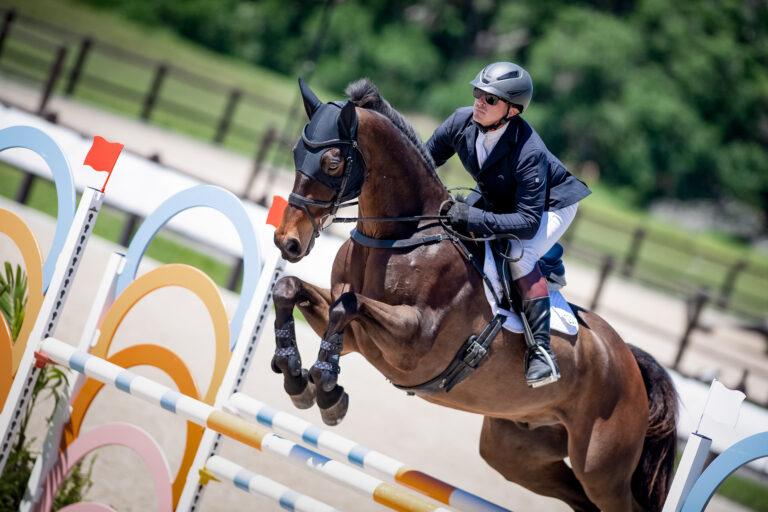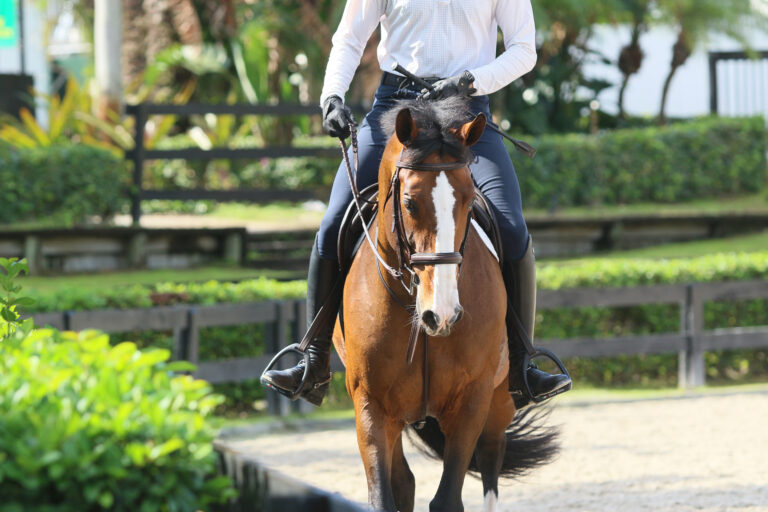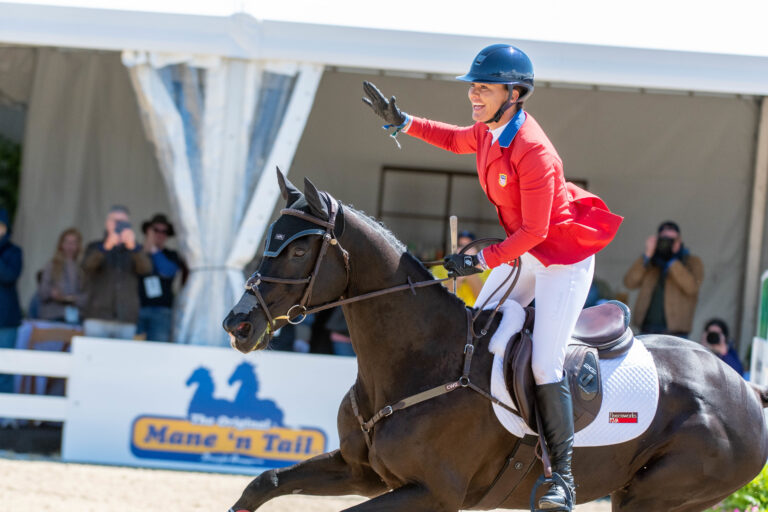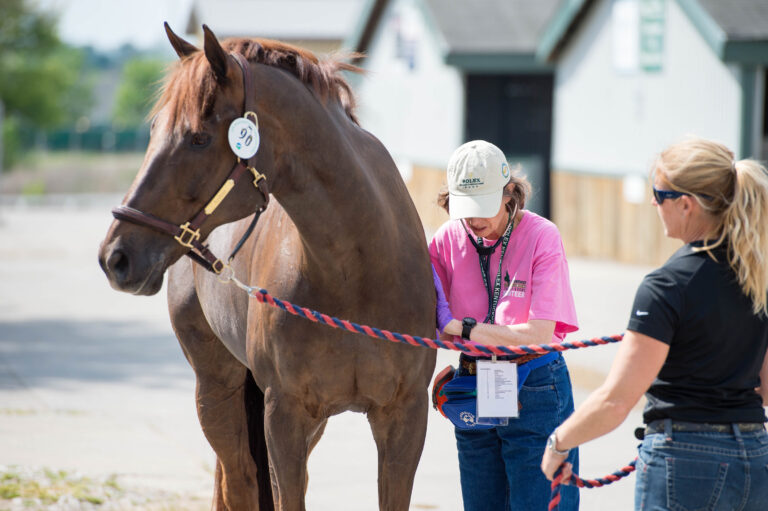In Holly Hugo-Vidal’s experience—whether she’s training or judging—a lot or riders are obsessed with trying to find or produce a good distance, and in doing so, they often use conflicting aids or are overly busy with their bodies. When you over-ride like this, you’re more likely to misjudge and make your horse anxious, and abrupt, late decisions can make any horse nervous or strong, especially on the back side of a fence, she explains. For example, if you misjudge and chip to the first jump on a line and then over-ride to get the correct number of strides down the line, you’ll create an overly fast horse for the remainder of the course.
In an effort to help those who are insecure about finding their distances, a lot of trainers instruct riders to count their strides. But Hugo-Vidal says this can sometimes backfire, because riders then get fixated on trying to guess when the exact takeoff moment will be—like counting down to blastoff.
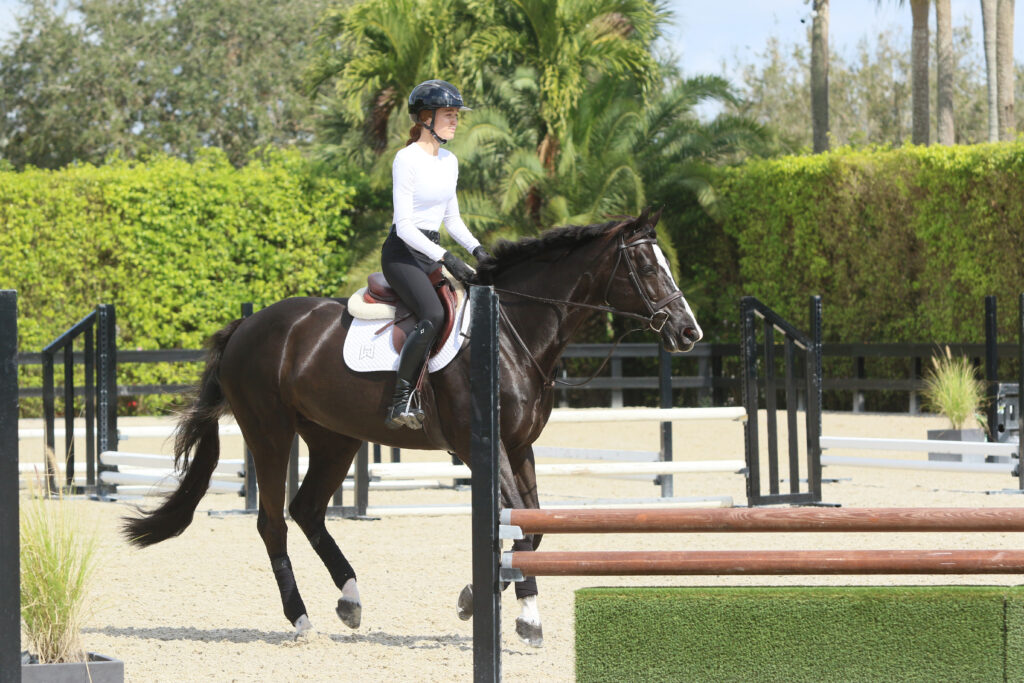
Another common problem develops when riders are convinced they’re helping their horses by telling them when to take off, when in fact they really don’t know. Unless you’re a highly skilled and experienced rider, she notes, this can create a lot of confusion for your horse.
If, however, you practice focusing less on the fences and more on your rhythm and track, you’ll find the distances come naturally. In her video series on EQUESTRIAN+, Hugo-Vidal breaks down her circle-over-fences exercise to help change your perception about distances and discover that if you achieve a quality canter, stay on the right track and ensure your horse is balanced between your legs and reins, you don’t have to do anything else. This in itself will allow your horse to find the appropriate distance.
Fences On a Circle: Finding Your Rhythm and Track
“This is a tried-and-true exercise that I’ve used over the years to help riders at all levels. We’re going work over fences on a circle to help you improve your rhythm and track. We’ll start with a ground pole on the inside track and then progress to a vertical on the middle track, and ultimately we’ll finish with the oxer on the outside.
“If you have the right pace and you’re on the right track and your horse is in balance, then the distance to the pole or jump should vary only by inches. If you turn too wide or cut in on the track, that’s going to affect your distance. For example, when Britt, our rider here, turns too early she got a deep distance.
“We start tracking right and go over the ground pole on the inside track. If you’re able to keep your horse balanced on the right pace and track and continue to meet the pole comfortably, then you can advance to doing the same exercise, but going over the vertical on the middle track.
“Britt makes it look easy because she’s relying on her horse’s rhythm and is looking for the track so she can meet the jump right in the center. Now, she opens up the circle even wider to catch the little oxer on the outside track. Because she’s doing it so perfectly, I have her change tracks to get a feel for how that creates a bad distance. Then, I have her go back to her perfect track to ensure she knows what that feels like and because we always want the horse to end on a good note.
“Now, we’ll change directions and do the exercise off the left. Tracking left, Britt’s horse tends to drift off the track more than he does to the right. So, she’s going to need to compensate more going to the left by maintaining that left bend through the turn to keep the track circular to the pole and jumps, opposed to bending him and then going straight. Don’t let him fall in after the pole; you want to maintain that 90-degree angle as much as possible.
“This exercise is a means to an end—the goal is not to replicate a course. You want to follow the round shape and think about matching what you have on the front side of the jump to what you have on the back side.
“Constantly be aware of your canter. Is it active enough? Is your horse in front of your leg? As you approach the oxer, I don’t want to see a change in pace at all. Stay on the rhythm and seek the center of the jump.”
Common Mistakes: Falling Behind and Jumping Ahead
“Here, I have Britt demonstrate some common mistakes riders make on this exercise. She’s been doing an excellent job of waiting for her horse and working out of the rhythm. Here, she’s going to demonstrate a rhythm that’s not ideal, so she misjudges the distance and gets left behind. This demonstrates why it’s so important to maintain the rhythm with a quality canter while also staying on your track to get the ideal distance.
“The next mistake I have her make is jumping ahead of her horse. Instead of sitting up and waiting for him to leave the ground, she’s going to demonstrate getting ahead of him, which is actually worse than being a little behind. You can see that she was unsure of where her horse was and kind of froze and got ahead of him. Ideally, you don’t want to be ahead or behind; you want to be right with your horse.
“Through this example, Britt is mimicking a rider who gets nervous and is anticipating the jump—and you can clearly see the effect it has on her horse and how he gets quick on the back side. For her horse’s sake, we end by doing it correctly on the ideal rhythm and track, and she waits to allow her horse to jump up to her.”
Focal Points to Adjust Or Maintain the Canter
“As you can see in the video, I’ve put two shamrocks in strategic places on the ground. This is to remind Britt that after she lands from the pole or jump and is heading toward that first shamrock, she needs to determine whether she needs to adjust anything. You want to use this space to determine if your pace is below or above what you need and adjust it as necessary.
“The shamrocks serve as visual reminders to check your canter as you work this exercise. For example, if your horse lands on the wrong lead or the distance you got to the jump caused him to land a little quick on the back side or he’s a little slow and trots—or if anything else goes wrong on the back side—once you see that shamrock, you need to repair your canter.
“In this exercise you’re basically working on straight lines off the circle, but the concept will easily carry over to your course work. For instance, when you’re coming off a line and are approaching the end of the ring, you need to be asking yourself what you need to do to adjust or maintain your canter in order to get a good distance to your next fence. You have to train yourself to use that space to make corrections. If you can do it before you get to the end of ring, all the better, but if not, absolutely use the short end to regain your ideal rhythm at the canter. If it helps, try to find a focal point or marker in the show ring to serve as a reminder, so you don’t get lost.”
For More:
- To watch Holly Hugo-Vidal’s full series on riding fences on a circle, click here.
- For more top tips and hands-on training tips from her on EQUESTRIAN+, click here.
- Read more with Hugo-Vidal on Practical Horseman here.
About Holly Hugo-Vidal
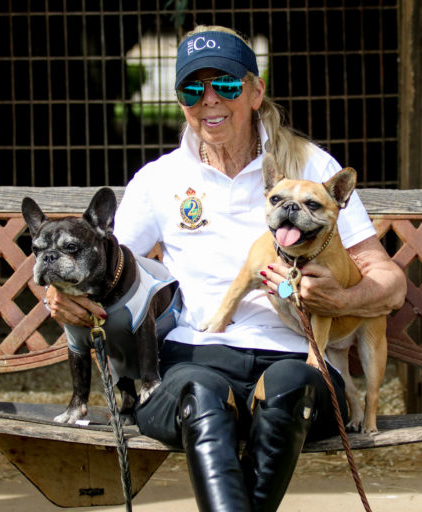
Based out of Scott and Nancy Boggio’s Arbor Hill Farm in Canton, Georgia, Holly Hugo-Vidal maintains a busy schedule with her junior and adult riders as well as giving clinics and judging. With her former husband, Victor Hugo-Vidal, she ran the successful show barn, Cedar Lodge Farm, in Stamford, Connecticut, learning from his ability to help anyone with a desire to accomplish his or her goals. Her next mentor was show jumper Rodney Jenkins, who provided her with lessons in reading horses and creating in them a desire to please. She is the author of the book Build Confidence Over Fences!






